
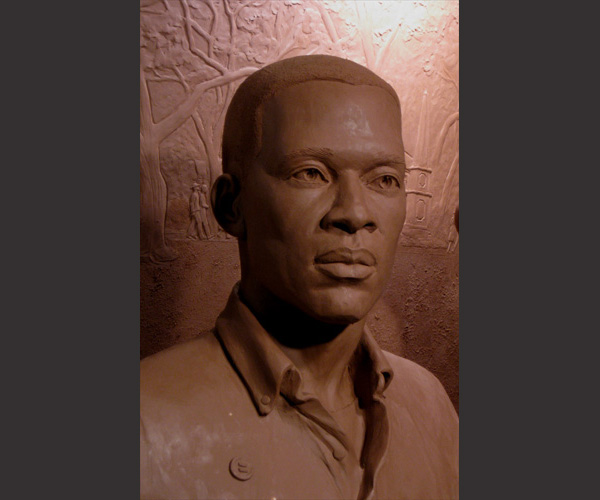
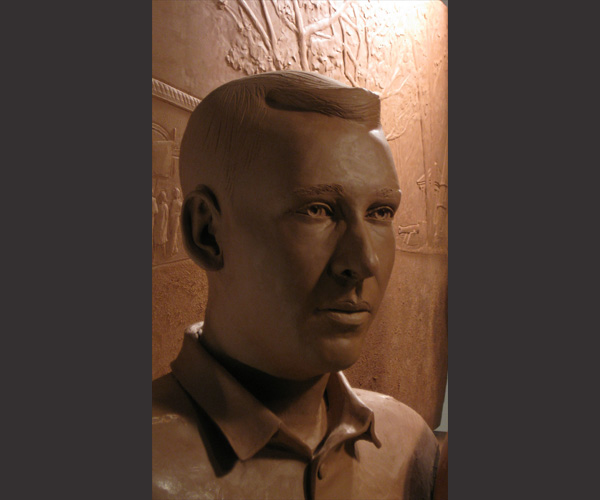
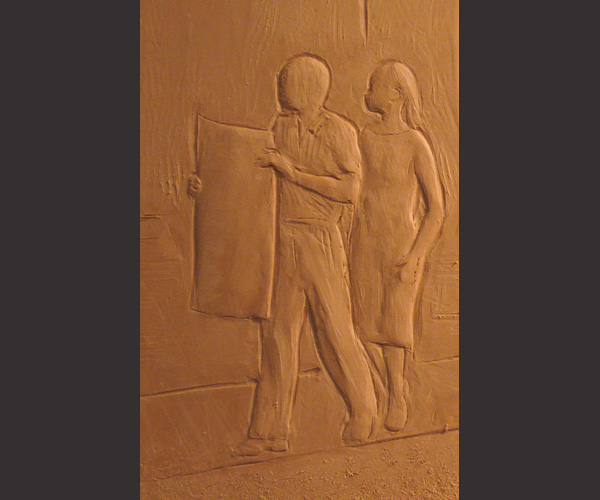
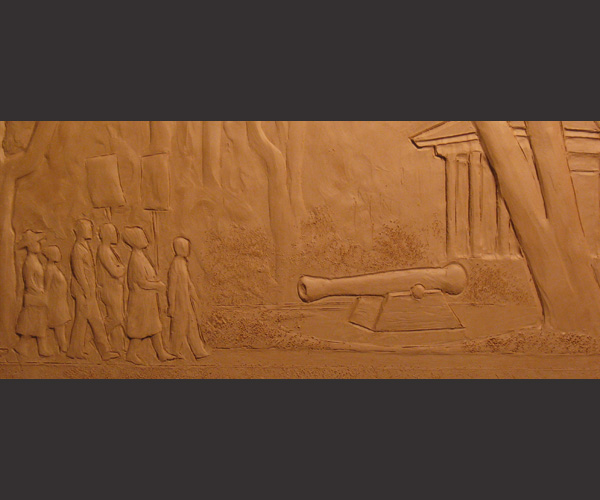
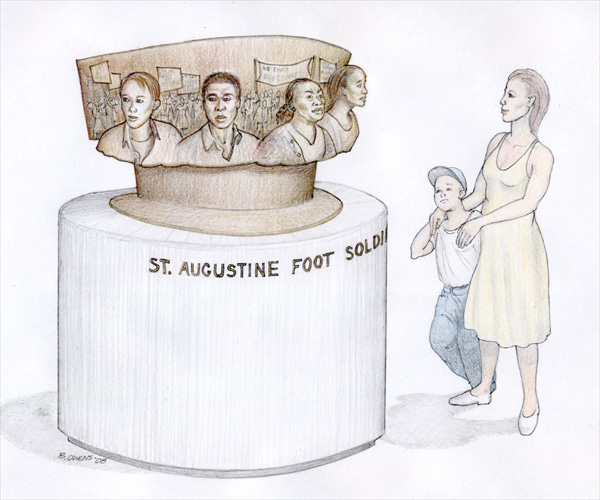
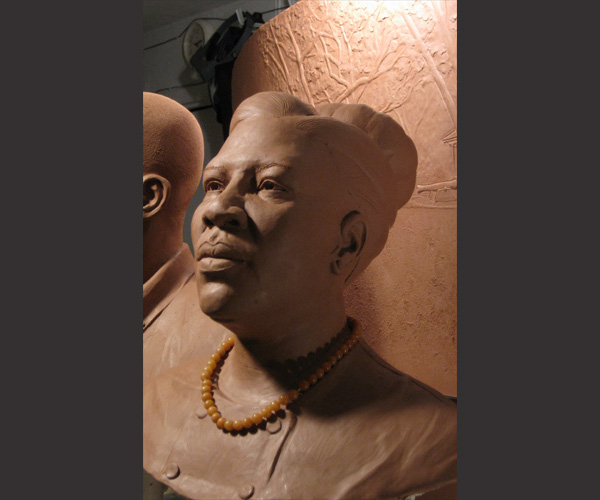
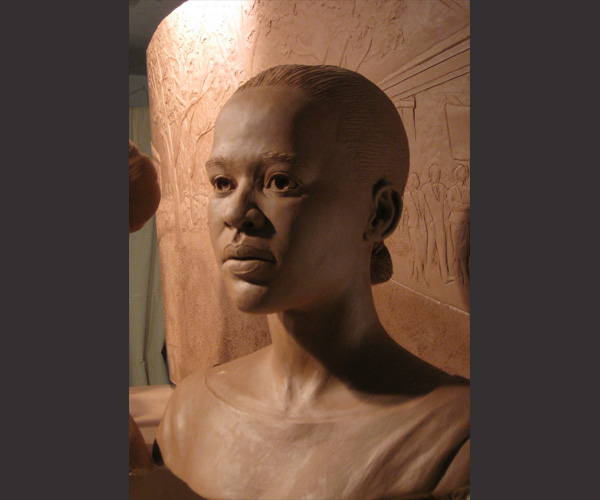
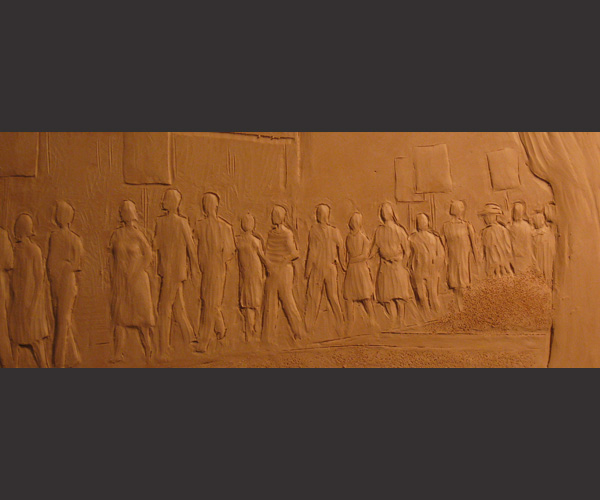
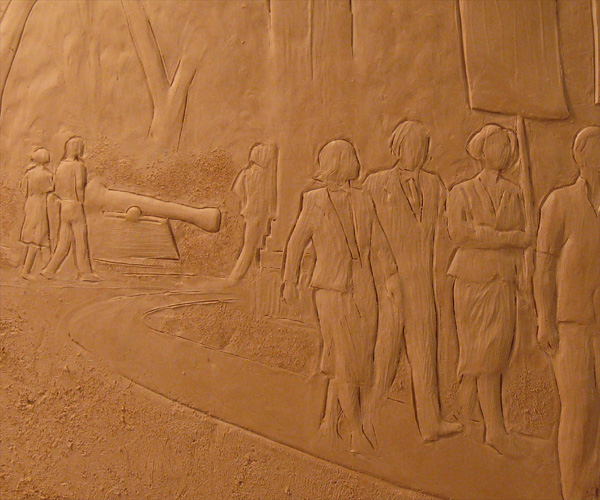




 |




 |
The sculpture was entirely recreated in bronze by hand using methods invented about 3500 years ago, probably by civilizations located near the Mediterranean Sea. These methods were later brought to a very high level by the Greeks who perfected the "lost wax" method of bronze casting. But before any bronze work is begun, the first step is to develop an idea; a design. This sculpture proceed in 3 stages as is customary for this type of commission. During the first stage, I proposed my ideas by developing a "preliminary design" in the form of illustrations. When these illustrations were accepted, the client moved forward with their fundraising. Work on the sculpture officially began on September 4, 2009 during a contract signing ceremony held in the Plaza de la Constitucion on the spot where the completed bronze was installed. Hence, the second stage (to complete the full scale clay model) was underway. With the full scale clay model complete, the client could finally see what I envisioned from the beginning and with a "thumbs up" from the Client, I was free to proceed to the third stage: The irreversible process of bronze casting. So labor intensive is the process of bronze casting, that most artists (wisely) employ the services of a foundry, where bronze is cast into special molds and finished by highly skilled metal workers (many of whom are sculptors themselves). A trusted colleague and myself delivered the bronze sculpture from the foundry to the Site by truck on May 10, 2011. A forklift was used to lift the sculpture off of the truck and lower it into position on the cast-stone base. Once we were certain that everything was perfect, a custom-made, lockable cloth cover was installed over the sculpture to conceal it from the public untill the unveiling ceremony a few days later. As an artist, you have to stop working at some point and when you do, you're not really sure that you got it right. So I listened with great interest to the comments of people who were watching the installation, people who were seeing the sculpture for the very first time before it was covered; seeing the sculpture in a proper setting out of doors as I intended it to be seen; people with no vested interest in whether the sculpture succeeded or not. To create a sculpture in bronze is no small investment. Bronze is an alloy. You cannot go out and find it in nature. You have to make it. The invention of bronze - the deliberate fusing of 2 dissimular metals to create a new metal with properties different from its constituent parts - was a vital step in the "Ascent of Man". So important was this new metal and the new way of thinking that accompanied it, that we have marked off a whole section of human history and labeled it "The Bronze Age". Now, we launch our robotic probes into deep space and tinker with things so small that they can no longer be called "things" at all and still, we never tire of this ancient alloy. When we need to depict the people and events that show the human species at its very best, we return again to the metal that started it all, the first metal invented by men. |
||
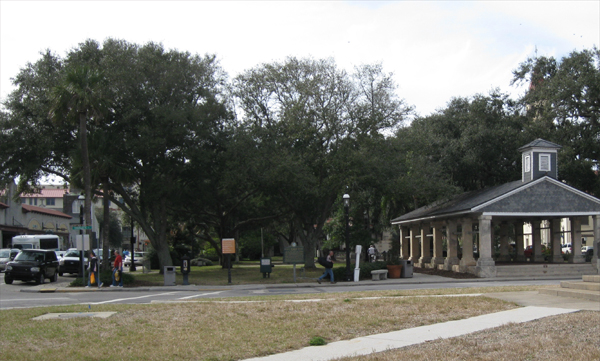
The street on the left is Martin Luther King Boulevard, so named because he marched in St. Augustine (yes, St. Augustine) in 1964. |
||
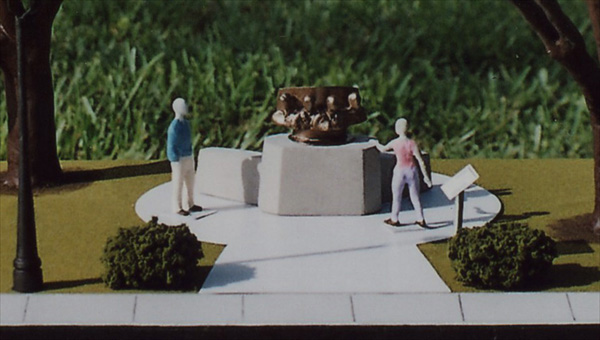
This was an early architectural model of the Site, with an earlier wing-shaped version of the Base. The area behind the Base is a donor-recognition area. This concept was set aside in favor of a Base of simpler design. |
||
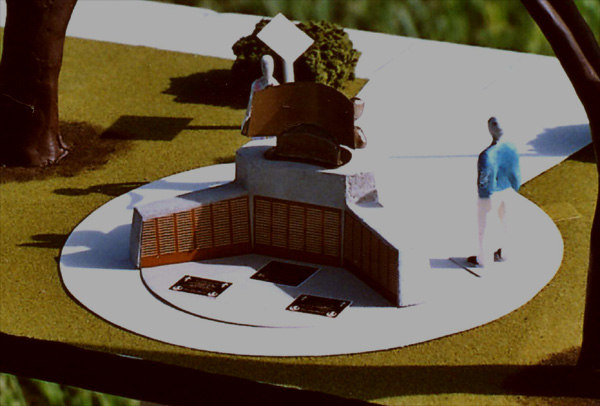
The final Site design is more elegant and straightforward. Sometimes "less is more". |
||
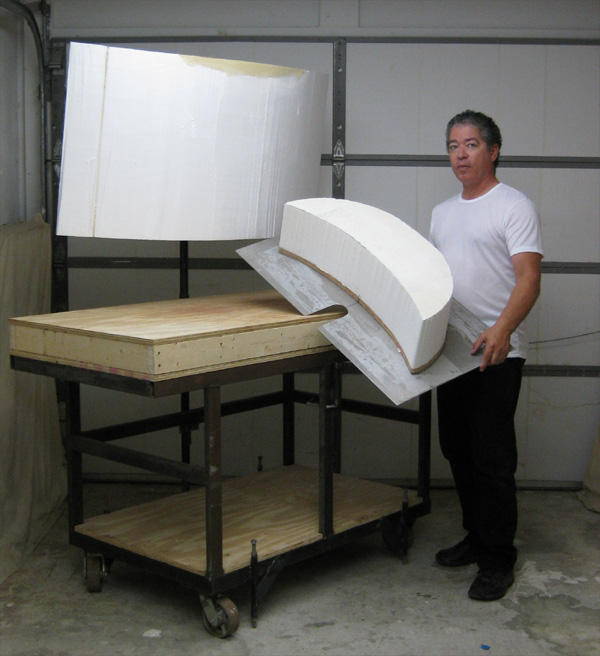
The clay model (shown at the top of this page) was sculpted over this. |
||
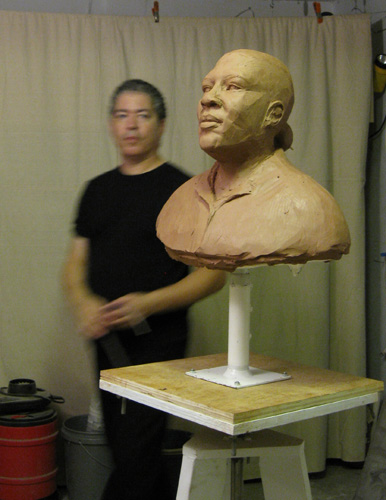
|
||
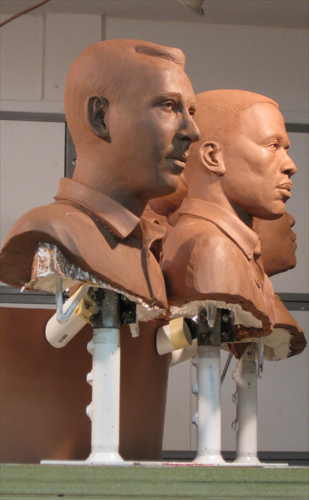
between the need for creativity, the need for precision and strength and the need to stay within budget. |
||
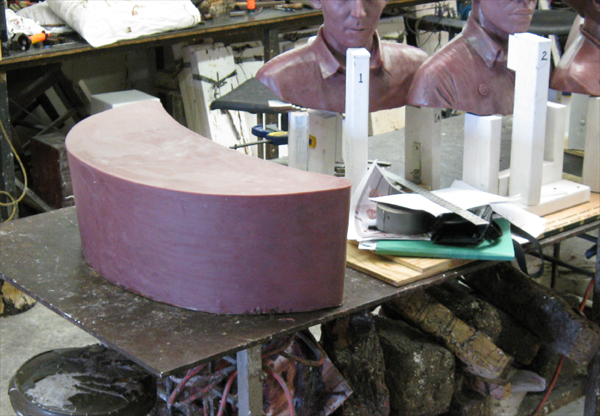
When the wax is perfected, you're not even halfway through the process of bronze casting. |
||
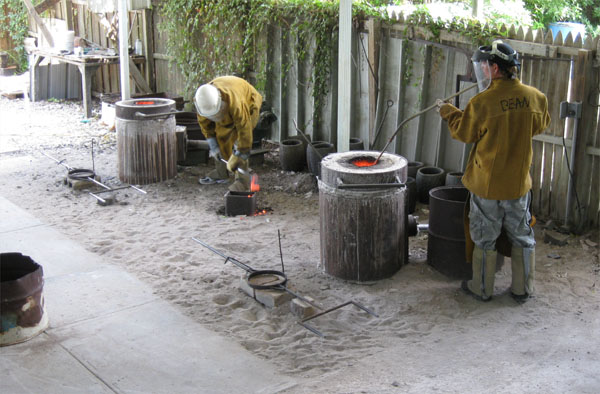
at Bronzart Foundry, Sarasota, Florida. |
||
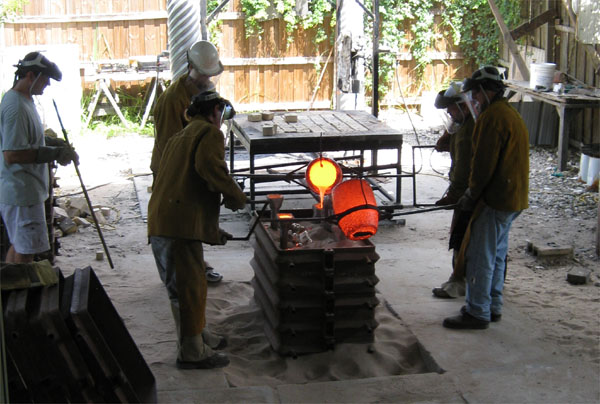
at Bronzart Foundry, Sarasota, Florida. |
||
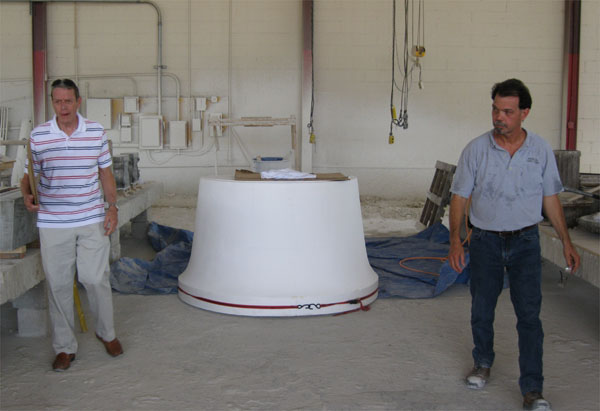
and built by Pedroni Cast Stone in Jackonville, Florida. |
||
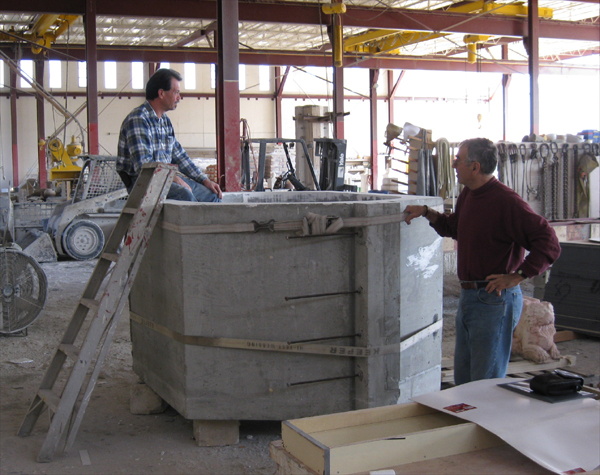
to produce the cast stone base. |
||
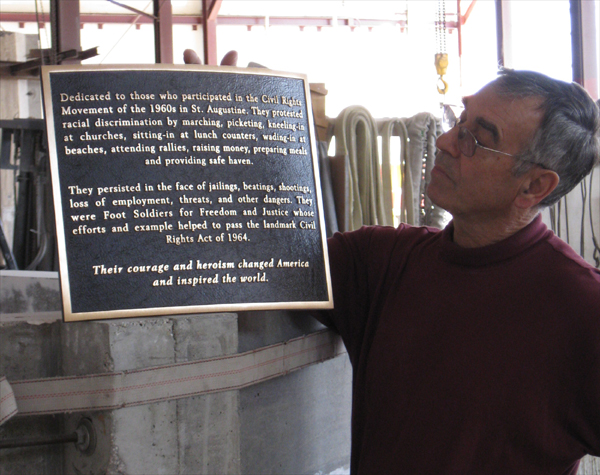
that will be installed on the front of the cast stone base. |
||
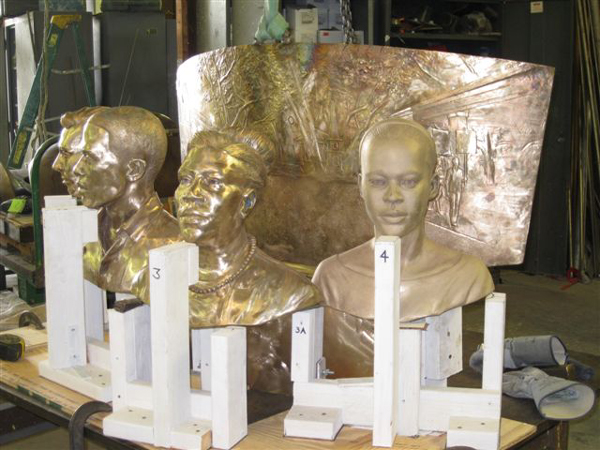
using a jig that holds it all in position. |
||
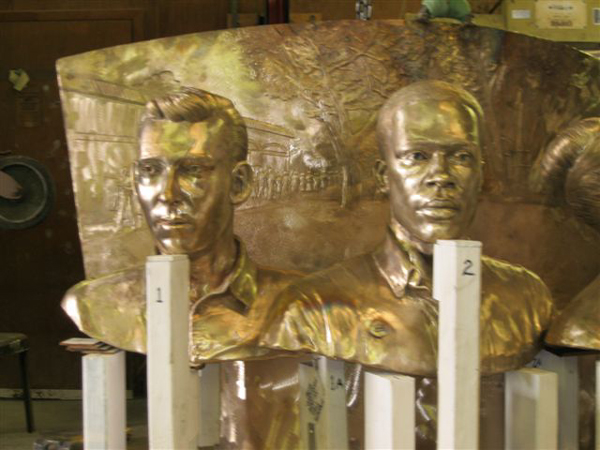
using a jig that holds it all in position. |
||
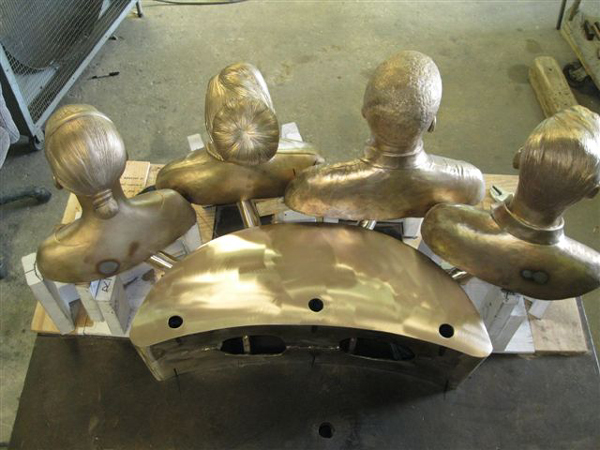
in air in front of the bronze "crescent-shaped base". |
||
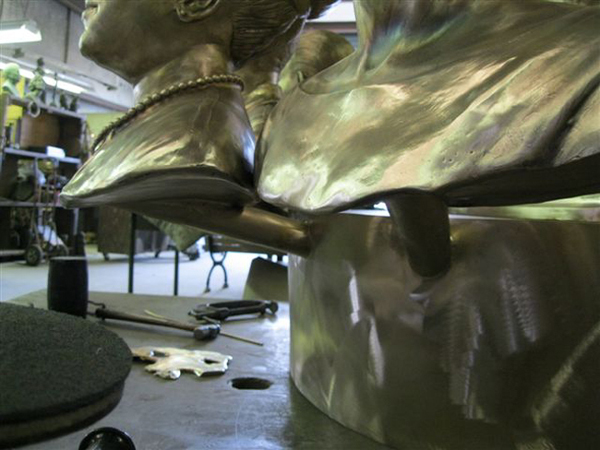
is supported from below. |
||

after the surface has been perfected but before the patina was applied. |
||
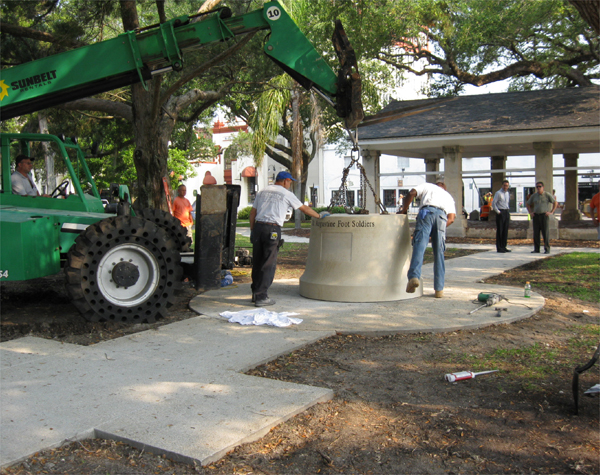
A custom footer lives beneath the concrete pad. |
||
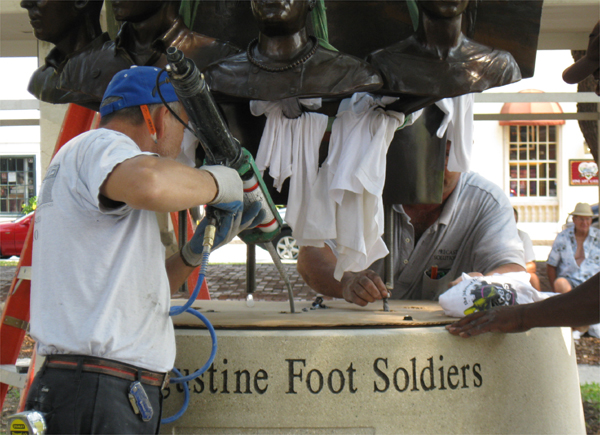
holes are carefully filled with adhesive. |
||
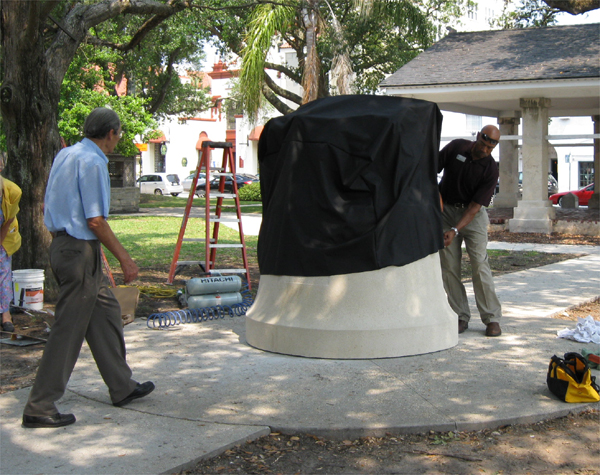
over the sculpture to conceal it until the unveiling ceremony a few days later. |
||
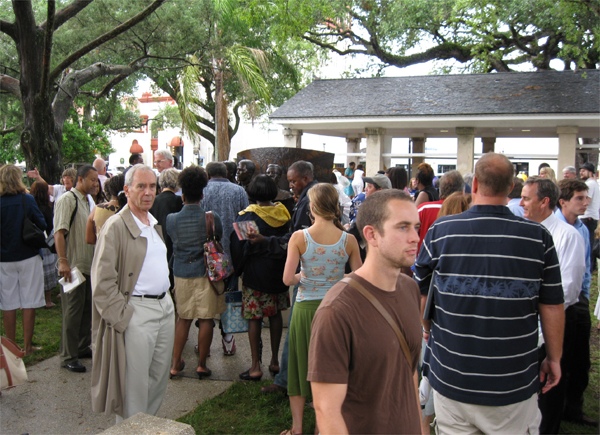
once used to sell slaves, the sculpture was unveiled. |
||
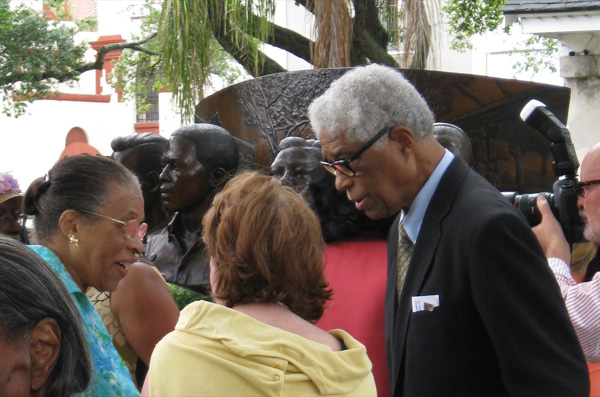
|
||
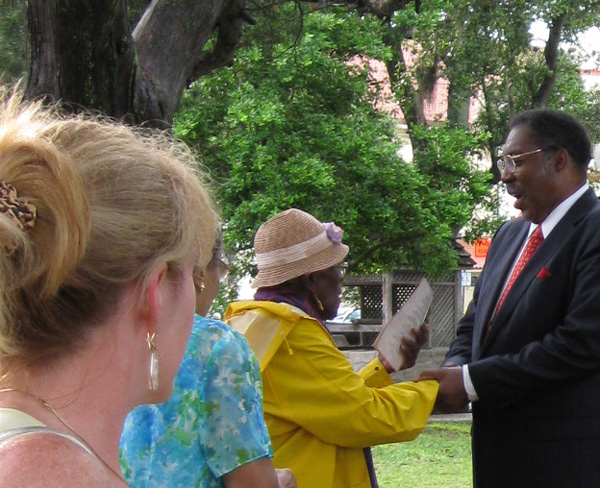
|
||
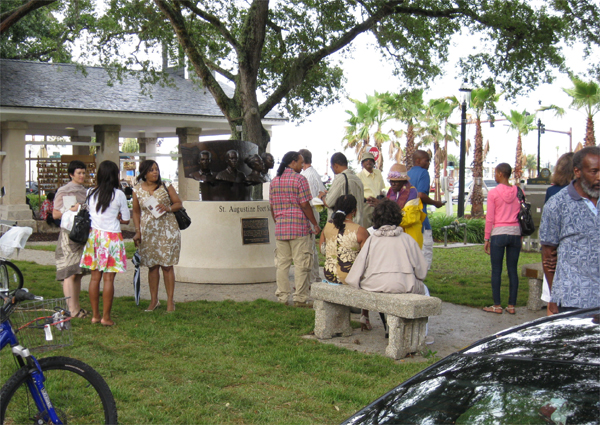
custom-made benches with donor-recognition plaques. |
||
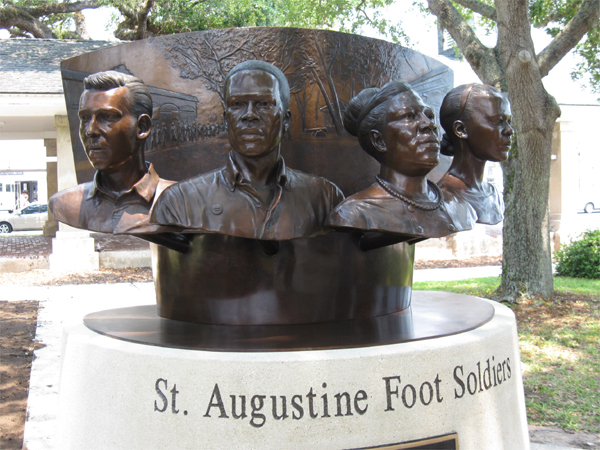
|
||
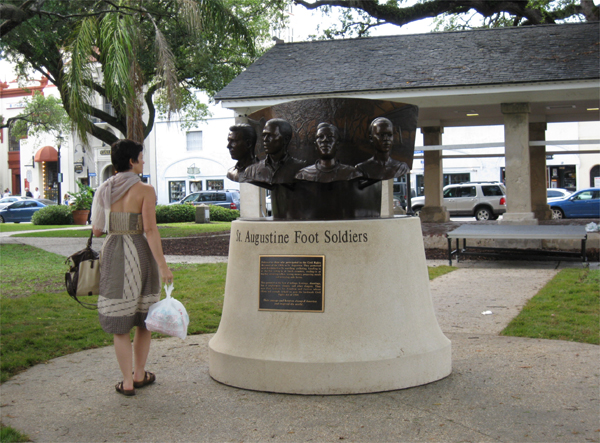
The four subjects are anonymous, as were most of the Foot Soldiers, but represent who they were (as best I could anyway, given the limitations I had to work with): A white, male college student; a black man in his 30's; a black woman in her 60's; a black girl, age 16. The relief illustrates a mass protest that took place in the Plaza where the sculpture is now installed and faces the buildings where the first direct confrontation with authority was made. This sculpture - commissioned and paid for by the St. Augustine Foot Soldiers Remembrance Project, Inc. - was given to the City. |
||
